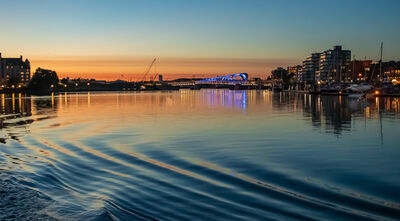South & East Asia 11 - China/Sichuan 10: Jiuzhaigou 1 - Intro to Valley and Long Lake
Jan 14, 2022 15:17:16 #
Jan 14, 2022 15:23:27 #
UTMike wrote:
Gorgeous landscape set, Joe! I hope that last on is on your wall.
Thanks Mike - my walls are all covered with photos from the last millennium! - I will eventually have to do something about that
 , but I have my TV running my newer pictures on an 10 second interval basis, so I do get a chance to see the newer photos, if only fleetingly ....
, but I have my TV running my newer pictures on an 10 second interval basis, so I do get a chance to see the newer photos, if only fleetingly ....Jan 14, 2022 18:21:23 #
Jan 14, 2022 18:23:40 #
Jan 14, 2022 18:24:11 #
Jan 14, 2022 18:59:50 #
Jan 14, 2022 19:15:33 #
weberwest wrote:
The Holiday Inn hotel we stayed at is fairly close... (show quote)
I am enjoying the trip, Joe. Great images and educational story! . . .

Jan 14, 2022 19:32:53 #
FotoHog wrote:
I am enjoying the trip, Joe. Great images and educational story! . . . 

Thanks Kip, I am happy to hear that you are enjoying the trip, both on the photographic and story level!
Jan 14, 2022 20:20:52 #
GreyOwl40
Loc: Quebec City
An attractive set of photos and and interesting read as well, Joe! I particularly like the 6th and 10th images. Great composition, with beautiful muted colors and reflections!
Jan 14, 2022 21:45:47 #
GreyOwl40 wrote:
An attractive set of photos and and interesting read as well, Joe! I particularly like the 6th and 10th images. Great composition, with beautiful muted colors and reflections!
Thank you John, it is always good to hear that some viewers actually read and enjoy the text also, I try to keep the texts generally short, with a lengthy intro at new blocks and light fare in-between. Happy to see that you also particularly liked these two mentioned shots - as you can see, we had a mostly white sky up there and just had to live with these conditions for the day we visited this wonderland. I would definitely try to get a bit more out of these images if I would work on them today, but am actually quite pleased how they came out with very minimal processing - and provide a touch on the moody side - we will have plenty of sunshine images when we move down to Myanmar and Thailand, so I enjoy the more mystical mood up here.
Jan 15, 2022 02:48:33 #
Jan 15, 2022 08:30:48 #
weberwest wrote:
The Holiday Inn hotel we stayed at is fairly close... (show quote)
Beautiful and very promising beginning, Joe!
Jan 15, 2022 11:14:47 #
Jan 15, 2022 11:16:11 #
Bubalola wrote:
Beautiful and very promising beginning, Joe!
Thank you Eugene for your appreciation!
Jan 15, 2022 14:49:00 #
weberwest wrote:
The Holiday Inn hotel we stayed at is fairly close... (show quote)
A wonderful set showcasing this area! The color of the lake just peeking out in a couple shots, I wonder what it may have looked like on a sunny day......
Loved #6 and #10 Joe!!!
Rob
If you want to reply, then register here. Registration is free and your account is created instantly, so you can post right away.






